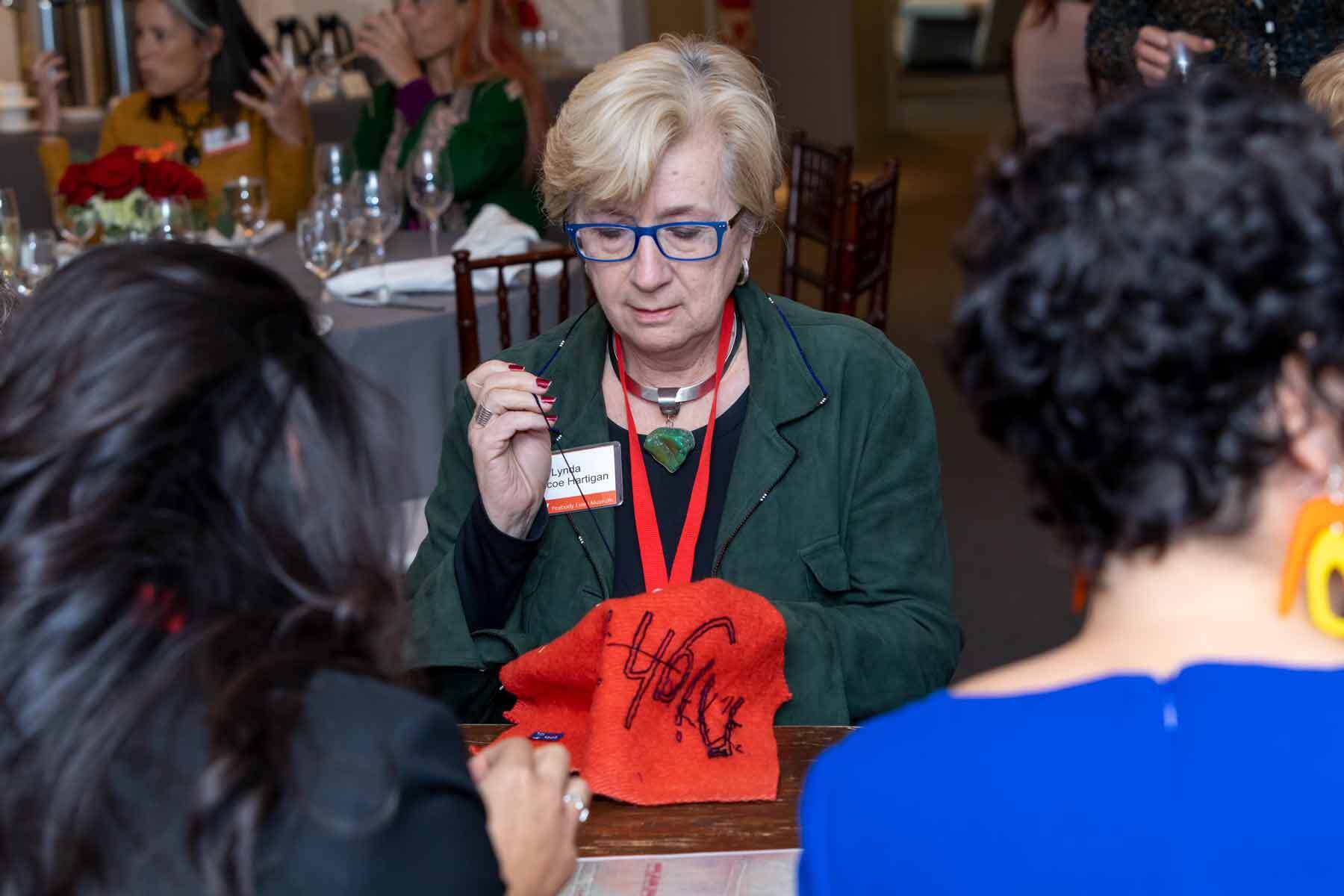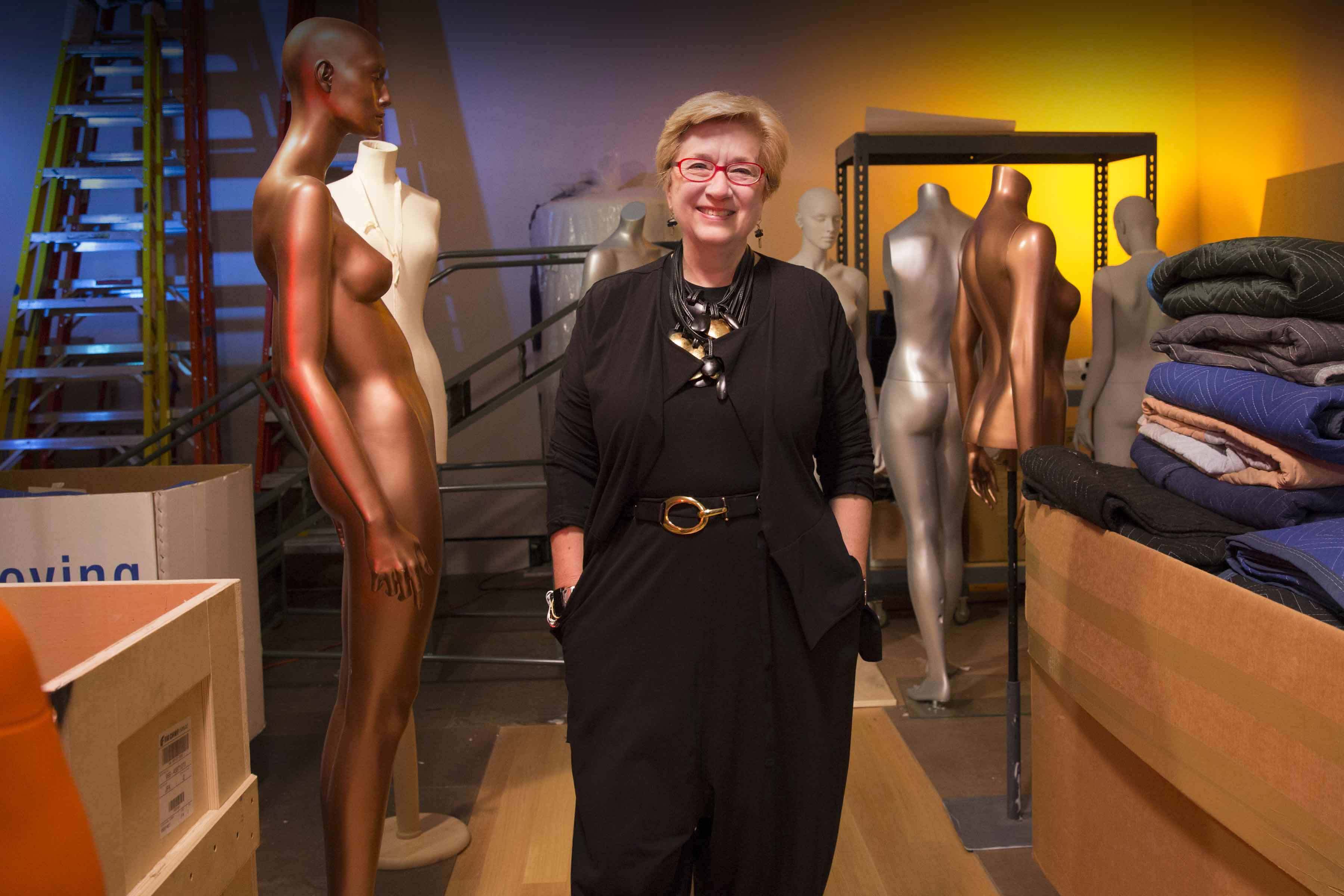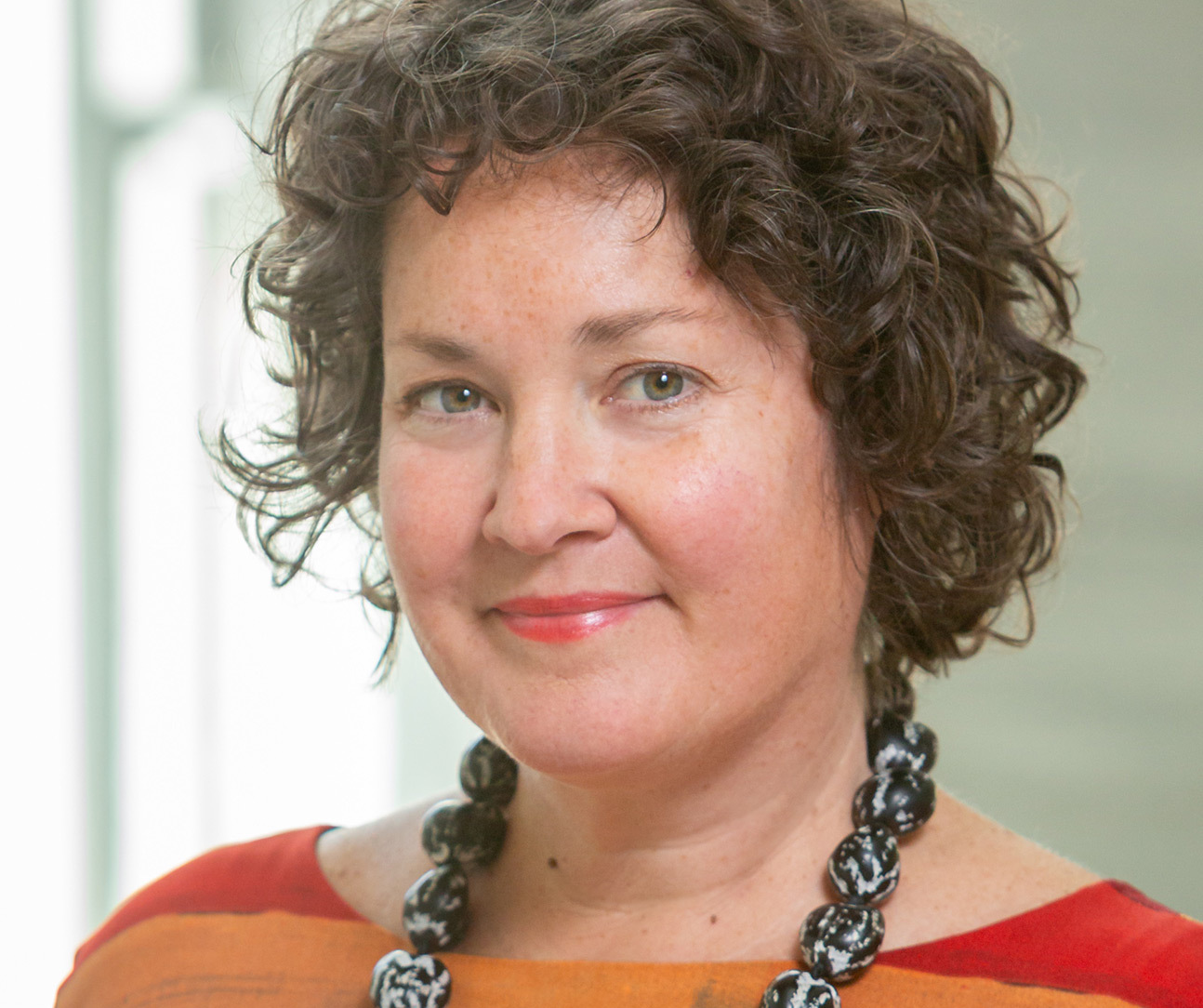Days before Lynda Roscoe Hartigan officially took the helm as PEM’s first woman Executive Director and CEO, we sat down to talk about her career path, her sources of inspiration, and the role of museums moving forward.
How are you feeling on the cusp of becoming PEM’s next Rose-Marie and Eijk van Otterloo Executive Director & CEO?
I’m thrilled to help an organization that has such potential to move ahead. I’m energized and looking forward to being in a museum that is open with staff available and in person. I’m genuinely optimistic. Yes, it’s been hard times for so many people, but I’m so excited about leading the museum. The human connection piece is important to me and I think that’s something that’s come across for many people because of COVID. You realize the importance of social intersection, that human touch.
Longtime visitors of the museum will recognize your name. How has your role at PEM evolved over the years?
The role of Chief Curator, which was my first position at PEM, was different from that at other museums. It really was about being the creative director of the place and moving people to a different kind of experimentation and questioning. I continued that in my role as Deputy Director. The consistent feature of both positions for me was coming to a greater level of appreciation and confidence in my ability as a change agent.

Why do people need museums right now? What can they provide in these challenging times?
I think it’s about the potential and the ability for museums, regardless of their focus — art, culture, science, children’s museums — to be a resource for people to make meaning of what they’re seeing and feeling and sensing and wondering about as they navigate their immediate world.
What first drew you to the museum field?
This goes back to my childhood. On the maternal side, there was a lot of creativity, but because my dad was a doctor, there was also a steady emphasis on science. When I was in fourth grade, my family moved across from the Everhart Museum in Scranton, Pennsylvania. It was a museum of natural history and art. My parents were very much of the belief that children need to be exposed to as many things as possible. That’s where I took my first art lessons and science classes, and I volunteered at the Everhart when I was in high school. It was an environment that I was always very intrigued about. The Curator of Science there would probably recall the day that I asked to rearrange the bird display cases. He said I couldn’t because the birds are arranged according to species. I remember telling him, “Yes, but it could look so much better.” It was an environment that intrigued me, in part because I was on a creative path myself.
I went to college as a fine arts major, intending to be an interior designer. Switching to my art history major got me started thinking about working in museums. That fine arts training and instinct for creativity have always helped me as a curator and in understanding how important the spatial and the visual are for how people experience and understand things. It made a huge difference in my life. Sometimes what you enjoy is the thing you become in terms of your profession.

I have always been struck by how many people have been coming to PEM since they were children. It reinforces how important it is for people to have that opportunity and that access as soon as possible.
Lynda in a community sewing circle at PEM with artist Marie Watt (Seneca and German-Scots). Each/Other: Marie Watt and Cannupa Hanska Luger opens in January. Photo by Kathy Tarantola
What’s the most interesting contemporary artwork you’ve encountered in the last few years that has challenged you?
Allison Saar’s 2018 contemporary assemblage Weight. We acquired it for PEM while we were preparing the Powerful Figures installation and I felt strongly about how contemporary expression by a Black American artist needed to be very much part of that experience for our visitors. I’ve admired her mother’s work, that’s Betye Saar. Then through Betye’s work, I got to know Allison’s work. She’s one of these consistently evocative and provocative artists, able to see things from different angles, related to a combination of a specific Black experience and where that connects to a more universal human experience. That’s one of the challenges and opportunities for PEM in order to demonstrate or share the gamut of very specific experiences to more universal experiences. PEM is particularly well positioned to be able to do that.
The other example is the work of Elias Sime, a contemporary Ethiopian multimedia artist. The Royal Ontario Museum, just as I was leaving my position there, presented an exhibition of his work. Over the years, Elias has gone through the Mercato, probably Africa’s largest open-air market, to collect motherboards, telephone wire, all sorts of detritus that have been discarded. He uses these contemporary technological materials to make massive wall reliefs. They are incredibly textured. He’s calling on traditions of weaving and braiding traditions of Ethiopia. It’s this notion of making something from nothing. It’s a comment on what we use and abuse in our culture. What can you create that is beautiful and thoughtful and expressive from something someone else didn’t need? Creativity is this incredible expression of imagination. It’s willing things into being that make you stop, experience and feel. Again, that’s something that PEM has been doing and really needs to continue to play out.
What is it about PEM that keeps you engaged professionally and personally?
Part of it goes back to the genetics of the place. It has been built and has grown because people have wanted to be aspirational, exploratory and experimental. It’s remarkably important that an organization that can say it’s as old as it is, is also as fresh as it is. This goes back to my belief in lifelong learning. Make the most of what you have while you’re here. There’s this organic character to PEM that has always intrigued me. The staff, the board and our supporters have not been afraid to experiment and take risks. It’s an extraordinary collection in its range. The museum has been a real magnet for an incredible staff. It’s that combination of people's skills and talents and the museum’s resources that are truly inspiring for me.
Each directorship at PEM over the last 222 years has been distinctive. What do you hope your legacy will be?
Quite frankly, as I was accepting the position, I didn’t spend much time thinking about how I’ll be the first woman director. But that will be part of my legacy. I think that it’s important for someone in my position to help an organization, to help staff, to help a board, to help a community understand why and how different forms of expression shape us as human beings. Because that’s how we collaborate, connect and have a sense of belonging.

Some part of my legacy is going to be totally unexpected. Something that we can’t predict. Maybe someday I'll be on a cloud up there and say “Oh, that’s what the legacy was.” I love the unexpected. I hope that part of my legacy is unexpected … in a good way, of course.
Alex Paul Photography, Inc.
Looking back over exhibitions you have worked on, which have been particularly influential to your career?
I would have to say my retrospective Joseph Cornell: Navigating the Imagination. It gave me the chance to encourage people to appreciate what happens when an artist dares to be different and is able to do something extraordinary because of his openness to all sorts of disciplines and ideas. He’s the ultimate cross-disciplinary artist because of everything he explored in the arts, humanities and sciences. To share that with people in a powerful visual and evocative way, is something I’m really proud of.

When at the Smithsonian, I felt very strongly that American fashion needed to be part of the American story of creativity. I will never claim to be a fashion curator. But I give PEM and the staff real credit for trusting in me to create a compelling fashion initiative that now has become stronger under the curatorial leadership of Petra Slinkard. It’s a reminder that if you really believe in something, do your damndest to make it happen and make it worthwhile for others.
Lynda Roscoe Hartigan with her husband, Roger Thompson, in the Charles Sandison: Figureheard 2.0 installation during the opening celebration for PEM's new wing in 2019. Photo by Michael Blanchard.
What inspires you?
It’s a stiff competition between people and objects. I’m absolutely fascinated by human nature and the potential for good and for creativity. I find people’s stories and how they express themselves incredibly meaningful. And then with objects, in addition to being visual, I have a real thing about touch and texture and how things activate my eyes and my mind. Sometimes it’s an object that does that and sometimes it’s a person and a circumstance that does that.
What do you do for fun in your spare time?
I’ve become very fond of Pilates, although my instructor would say I need to do it more. It’s been a good experience for someone like me who works a lot, to remember to take care of yourself. I have persuaded my husband, Roger, to join me and he’s enjoying it. I read a lot, mostly fiction. I love to cook, which to me is a strong creative outlet — I make a mean paella. I’m interested in how we can make food more of a presence at the museum as a form of creative expression, experimentation and sustainability. Apparently, I love to renovate houses and arranging and rearranging things. Friends have asked me to rearrange their living spaces. I get a big kick out of doing that.
What would people find surprising to know about you?
Some people might be surprised that I’m actually more domestic than I might come across. There’s something cathartic about cleaning or again, it’s the cooking. It’s the down-home kinds of stuff that are really meaningful to me. A lot of that relates to how I was raised, in terms of being in a close family, and having that be a really important part of your life. It’s very grounding. One of my earliest career aspirations was to be a stand-up comedian. I don’t know what the origin of that was, although I took elocution lessons as a child. Whatever I chose to do for my recitals usually had some humorous elements. I have always enjoyed making people laugh. Humor is great medicine.
Keep exploring
Blog
A word with new COO Kurt Steinberg
4 min read

Blog
A word with artist Carlos Garaicoa
4 Min read

Blog
A word with Curator Dan Finamore on summer exhibition In American Waters
5 Min read

PEMcast
PEMcast 22: Thank You, Mr. Peabody, Father of Philanthropy
24 Min Read


